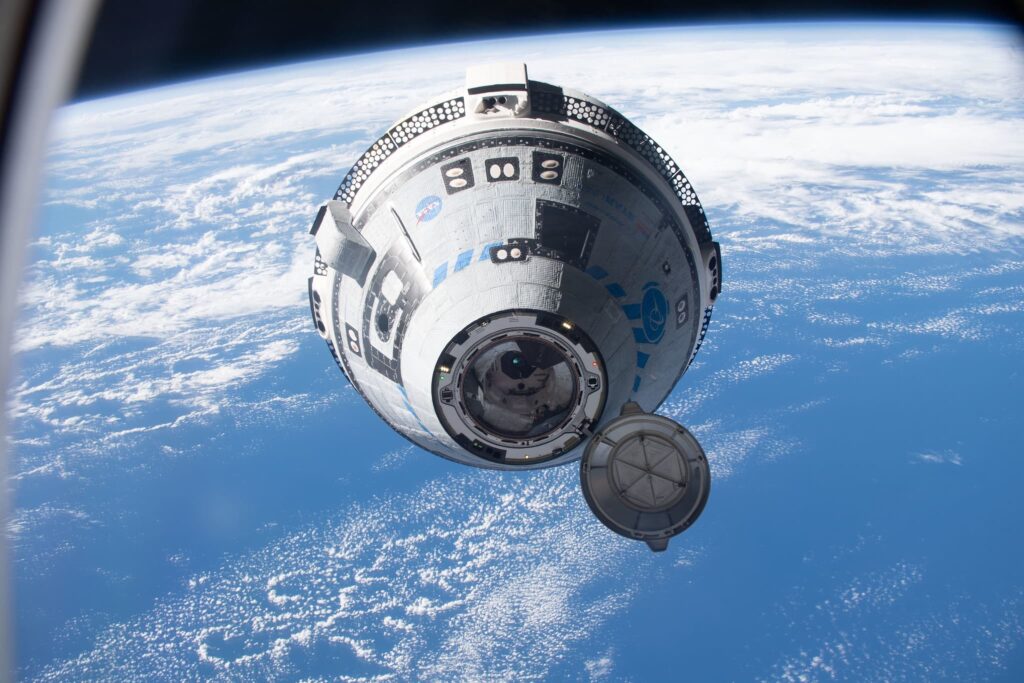
Audience
- Sentiment: Positive
- Political Group: Generally supportive of space exploration initiatives
- Age Group: Adults aged 25-45
- Gender: All genders, with a slight inclination towards males due to traditional interests in aerospace.
Overview
- Boeing’s Starliner is part of NASA’s efforts to enhance domestic crewed space travel.
- The Crew-10 mission highlights the importance of flexibility and teamwork in adapting to challenges.
- International collaboration is crucial, with astronauts from different space agencies working together on the ISS.
Boeing Starliner Test Mission Update: A Journey in Space and Teamwork
Hey there! Are you interested in space travel? If you’ve ever dreamed of being an astronaut or just wondered how we explore the cosmos, then you’re in for an exciting ride. Today, we’re going to explore the latest updates on the Boeing Starliner test mission. Buckle up, because it’s going to be a fascinating journey through the universe of space exploration and teamwork!
What is the Boeing Starliner?
Let’s set the scene. You might have heard of SpaceX and its Crew Dragon spacecraft, which have been making waves for transporting astronauts to and from the International Space Station (ISS). But did you know that Boeing, another giant in the aerospace industry, has its own spacecraft called the Boeing Starliner?
The Starliner is part of NASA’s Commercial Crew Program, which is designed to send astronauts to the ISS using American vehicles. The goal? Reduce reliance on foreign spacecraft and return space travel to the United States. Think of it as a way for NASA to have more options and more flexibility when it comes to crewed missions to space. The program is an exciting partnership between NASA and various private companies, paving the way for future space exploration!
The Latest Developments
Recently, there has been some buzz about the upcoming test mission for the Starliner. The mission is important because it serves as a key step in ensuring that the spacecraft is safe and ready for sending crewed flights to the ISS. However, plans have had to adapt due to the challenges and surprises that often arise in space exploration. The initial plan was to launch a crew of NASA and international astronauts in March. But now, an earlier than expected return to Earth is on the table.
A Game of Switcheroo
Imagine you’re playing your favorite video game, and you’ve planned out your strategy, only to find that you need to switch characters at the last minute. That’s sort of what happened in this situation. The Crew-10 astronauts were all set to launch aboard a brand-new Crew Dragon spacecraft. However, problems popped up with that spacecraft, leading mission managers to pivot and use a previously flown Crew Dragon instead.
The Crew-10 mission will now include NASA astronauts Anne McClain and Nichole Ayers, along with JAXA’s (the Japan Aerospace Exploration Agency) Takuya Onishi and Kirill Peskov from Roscosmos (the Russian Federal Space Agency). Talk about an international crew! The new plan has them returning to Earth on March 12, just a few days after their mission begins. This change is a prime example of how adaptable and ready-for-anything the teams involved in space exploration have to be.
Teamwork Makes the Dream Work
Why is this flexibility so crucial? In space travel, things don’t always go according to plan. Whether it’s technical difficulties or scheduling conflicts, a successful mission depends heavily on teamwork and communication. NASA and SpaceX have developed a strong partnership, and when issues arise, responding quickly can keep everything on track.
The Starliner’s test mission is a testament to that teamwork. Despite the challenges with the Crew Dragon spacecraft, by using a previously flown vehicle, they are ensuring that the mission can proceed with minimal delays. This also reflects the trust and collaboration built over years of working together. It’s like how a sports team has to adjust its game plan based on the other team’s moves—flexibility is key!
What’s Next for the Crew?
After Crew-10 returns to Earth, they will be having a handover at the ISS before Crew-9 comes back home. Crew-9 includes two well-known astronauts, Suni Williams and Butch Wilmore. These handovers are essential to maintaining the ongoing research and operations aboard the ISS, which is an orbiting laboratory that has been continuously inhabited by crews from various countries for over 20 years.
To think about it, the ISS is like a real-life science lab in space, where astronauts work on experiments that benefit life on Earth and give us insights into living in space. The crews work together to carry out research in various scientific fields, including medicine, environmental science, and technology. And it all adds to our understanding of our planet and the universe!
A New Challenge on the Horizon
As if navigating spacecraft wasn’t enough to keep mission managers busy, there are other challenges ahead. The timing of the Axiom-4 mission—set to launch in May—may need adjustments. This is due to limitations regarding docking ports and other scheduled flights. Just like in school, where you might need to juggle different subjects or group projects, the missions must be coordinated carefully to ensure everyone has their turn on the ISS.
But don’t worry! The teams are skilled in managing logistics. With so many missions in the pipeline, communication is vital, and adjustments will be made smoothly to keep everyone safe and make progress in space exploration.
Why This Matters to You
Now you may be wondering, “So what does all this mean for me?” Well, even if you’re not planning to become an astronaut, understanding space exploration and the partnerships that drive it can shape the future for everyone. The innovations that arise from these missions can lead to new technologies, improvements in communication, advancements in medical science, and even inspire environmental solutions.
Moreover, this excitement isn’t just limited to scientists and engineers—it’s about everyone, including you! The stories of astronauts and their journeys are inspiring. They teach us about perseverance, teamwork, and striving for greatness while tackling the unknown.
Final Thoughts
In conclusion, the Boeing Starliner test mission update shows us just how dynamic and fluid space travel can be. Plans can change, and challenges will arise, but at the heart of it all lies the strength of teamwork and the willingness to adapt. With collaborations between different nations and private companies, we are are unlocking the mysteries of space and expanding our horizons in ways we can hardly imagine.
So, what do you think about the upcoming mission and the teamwork behind it? Do you find space exploration exciting, or do you think it’s something better left to the experts? I want to hear your thoughts! Feel free to share your comments below!






